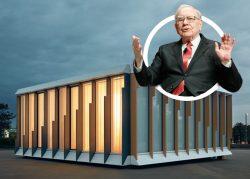As the housing sector grapples with widespread affordability and supply issues, an alternative is gaining ground: manufactured homes.
According to the Census Bureau, home manufacturers are expected to deliver more than 100,000 new homes for the first time since 2006, the Wall Street Journal reported. The homes are assembled in a factory before they’re installed on-site, offering some practical advantages to traditional home construction.
Manufactured homes are proving to be much cheaper than those constructed on-site, which is part of why they’re emerging as a potential housing solution. In 2020, the average home built on-site reportedly sold for $392,000, or $309,000 when excluding underlying land costs. Manufactured homes without land were averaging $87,000 the same year, according to the Journal.
While manufactured homes can be a cheaper alternative, their limited financing options create a different set of problems for homeowners.
According to the Journal, families in manufactured homes were twice as likely to fall behind on rent or mortgages during the pandemic. Approximately 19 percent of all manufactured-home owners were behind in the last quarter.
Read more


The manufactured home industry has its own roadblocks. For starters, some jurisdictions don’t allow for manufactured houses due to zoning codes that conflate them with trailer parks. Additionally, the factories that manufacture homes are facing the same supply chain issues as the rest of the housing construction industry and larger economy.
These types of homes represent approximately 9 percent of new single-family construction, the National Association of Homes Builders reports.
Still, the more affordable alternative could provide a path to homeownership to those blocked out by the hot housing market. According to the Journal, only 21 percent of new site-built homes sold in September sold for less than $300,000, still a considerable premium of last year’s average manufactured home sale.
[WSJ] — Holden Walter-Warner
